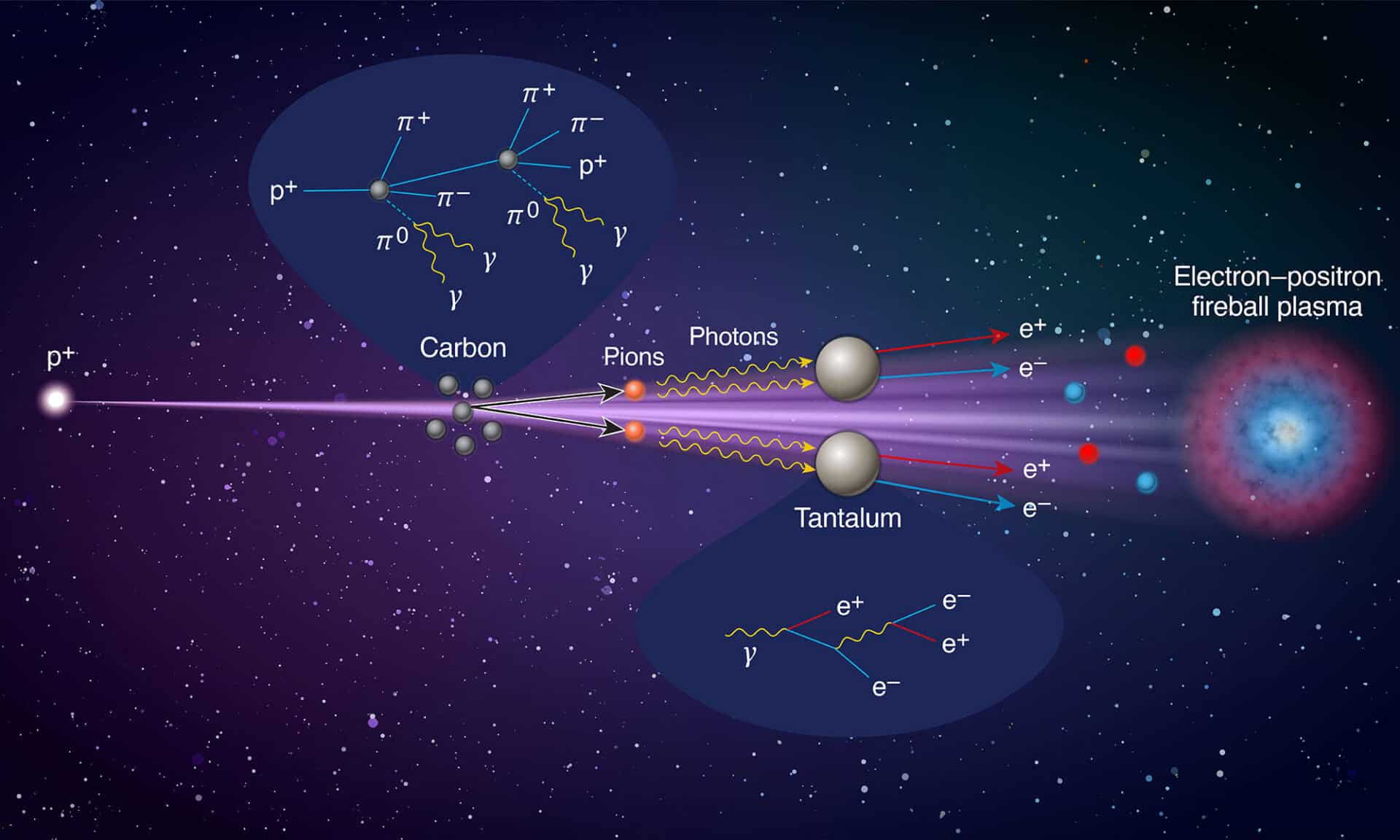
Plasma “fireballs” are omnipresent in deep space around black holes and neutron stars, but creating artificial versions here on Earth has proved difficult because of the high energies required. Physicists at CERN have now succeeded in generating such plasmas in the laboratory for the first time, using the nuclear research facility’s Super Proton Synchrotron (SPS) accelerator to create high-density beams of relativistic electron-positron pairs. The work could shed light on the extreme astrophysical emission processes that occur in gamma-ray bursts (GRBs) and active galactic nuclei (AGNs).
In general, a plasma is a gas so hot that some or all its component atoms are split into electrons and ions, which can then move independently of each other. However, in the extreme conditions around astrophysical bodies such as black holes and neutron stars, where accretion-powered jets and pulsar winds prevail, plasmas are instead made up of matter-antimatter pairs – electrons and positrons – moving at near-light speeds. These relativistic electron-position plasma beams also appear in blazars, which are AGNs that produce astrophysical jets directed towards the Earth.
The collective behaviour of these electron-positron pair plasmas is different from that of conventional electron-ion plasmas because of the symmetry between the matter and antimatter components, explains Charles Arrowsmith, a PhD student at the University of Oxford, UK, and the lead author of a Nature Communications paper on the work. “The role of these space plasmas is believed to be fundamental to explaining the emission from GRBs and the jets of AGNs, but until now numerical simulations were the only means to validate our theoretical models on the microscale,” Arrowsmith says. “Being able to perform controlled laboratory experiments realizes a decades-long pursuit with the promise of exciting science to come.”
Behaving like true astrophysical plasmas
A member of Gianluca Gregori’s group at Oxford, Arrowsmith worked with Dustin Froula and Daniel Haberberger of the Laboratory for Laser Energetics at the University of Rochester, US to make plasmas using the SPS’s 440 GeV/c beam. Their experiment involved 300 billion protons, each carrying a kinetic energy 400 times larger than its rest mass. “When a proton smashes an atom with such a large momentum, it has enough energy to release its internal constituents – quarks and gluons,” Arrowsmith explains. “This process produces a shower of particles (pions, kaons and other hadrons) that ultimately decay into electrons and positrons.”
The particle density of the electron-positron beams generated at the SPS is high enough for them to start behaving like true astrophysical plasmas, he adds. Indeed, the measured size of the pair beams exceeds that of the characteristic scales required for collective plasma behaviour to occur. According to Arrowsmith, such a beam “opens up an entirely new frontier in laboratory astrophysics by making it possible to experimentally probe the microphysics of GRBs or blazar jets.”

Magnetic islands stabilize fusion plasma, simulations suggest
Such studies were previously impossible, he adds, because satellite- and ground-based telescopes cannot resolve the smallest details of distant environments such as GRBs or AGNs. “Our laboratory experiments will now be able to test microphysical models of the behaviour of these space plasmas and the emission processes therein,” he says.
Future experiments might even use these test systems to directly probe the physics of plasmas involving electron-positron pairs. “This will help shed new light on extreme astrophysical emission processes to address as-yet-unresolved questions,” Arrowsmith tells Physics World.



